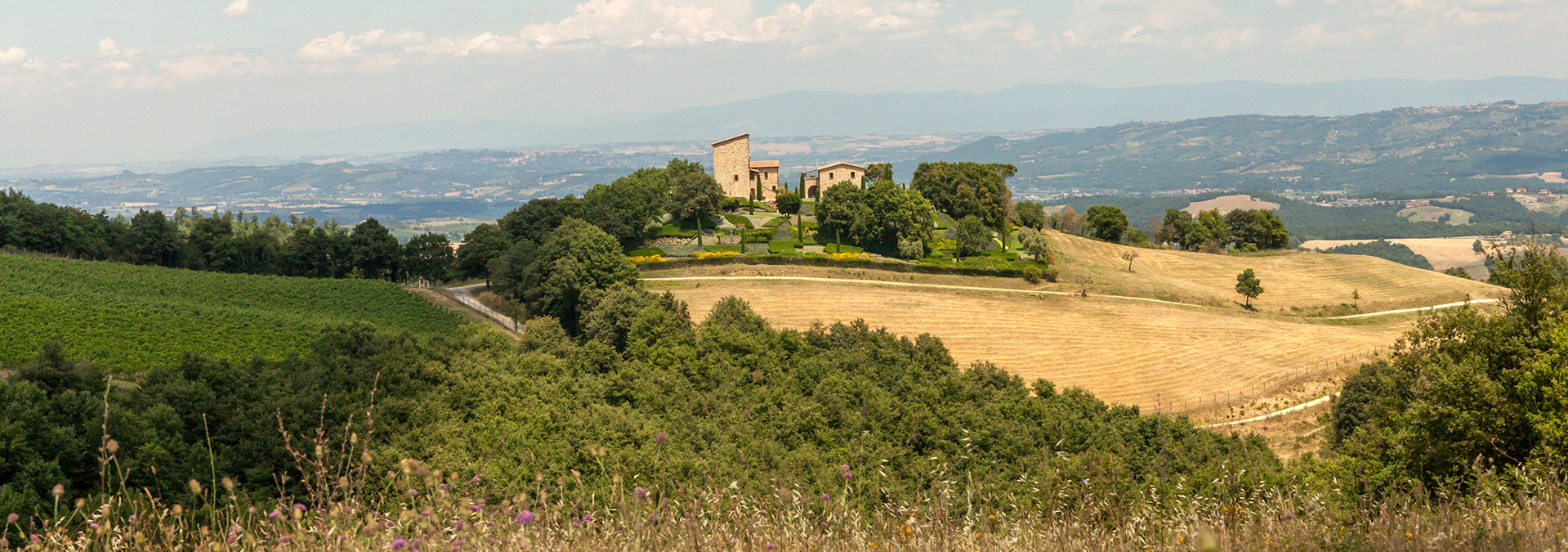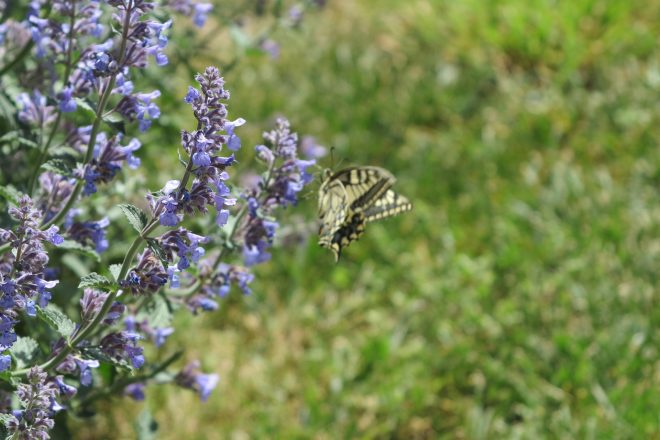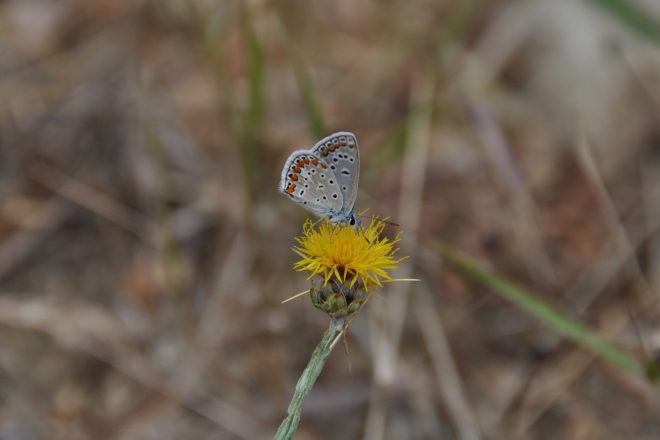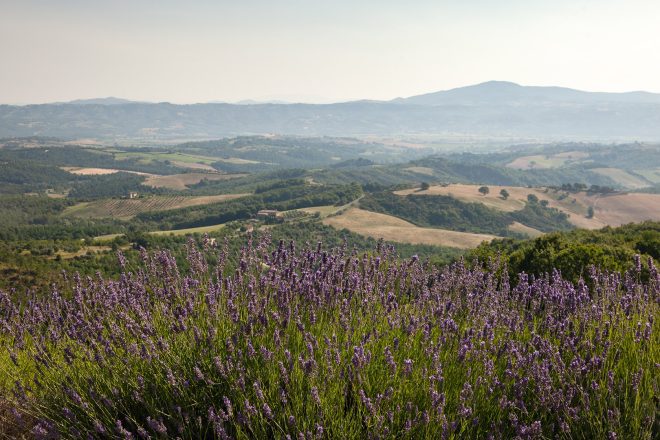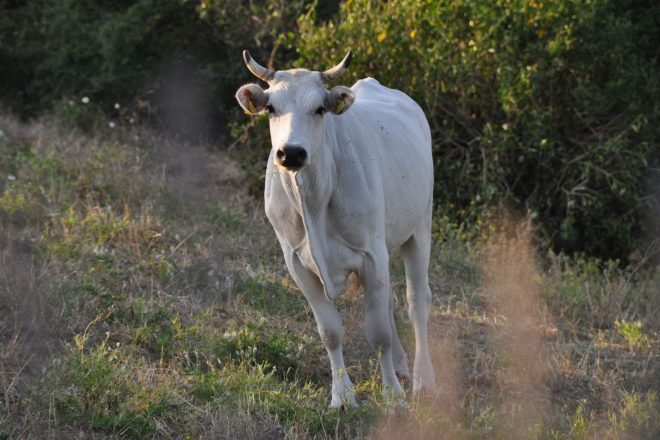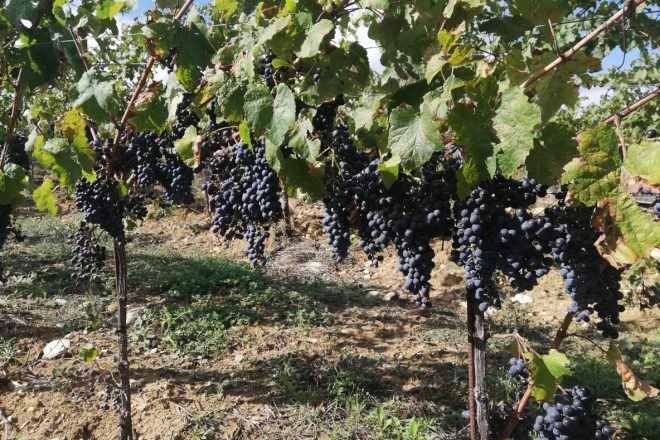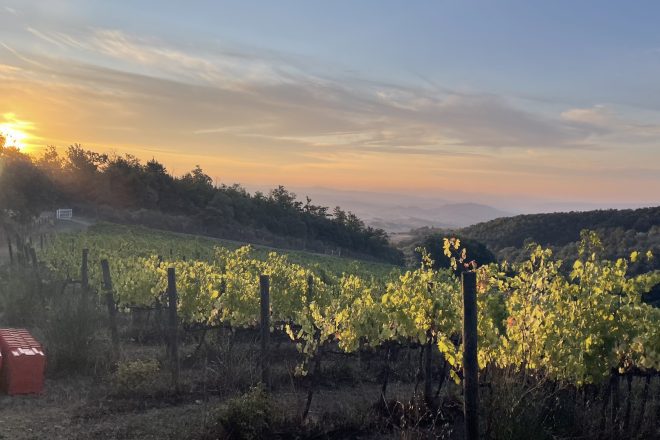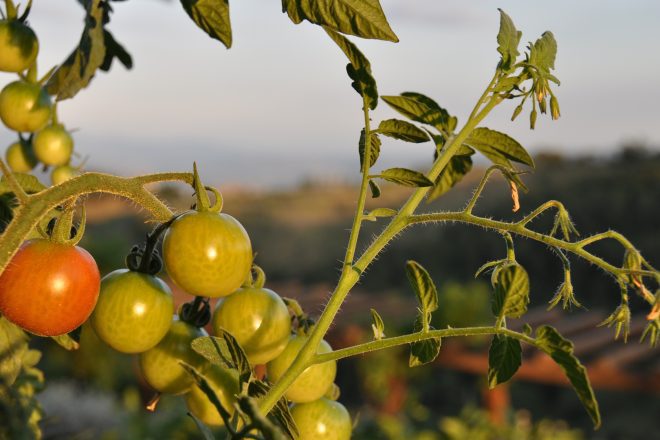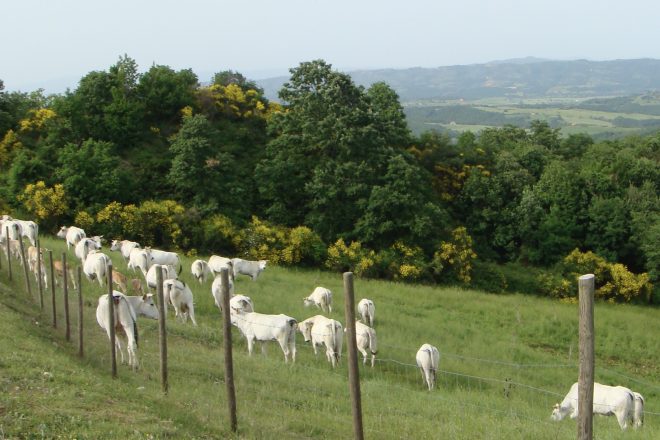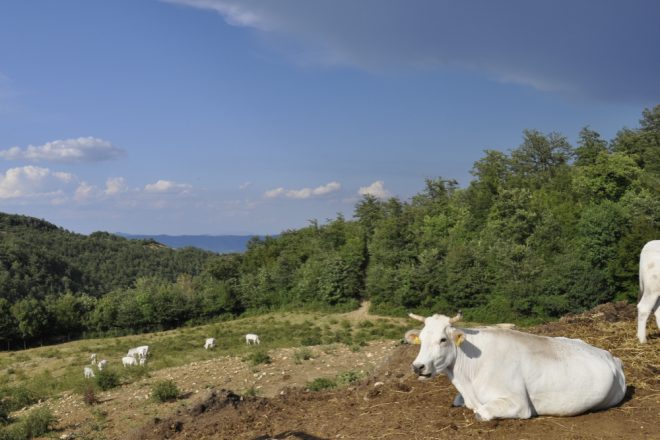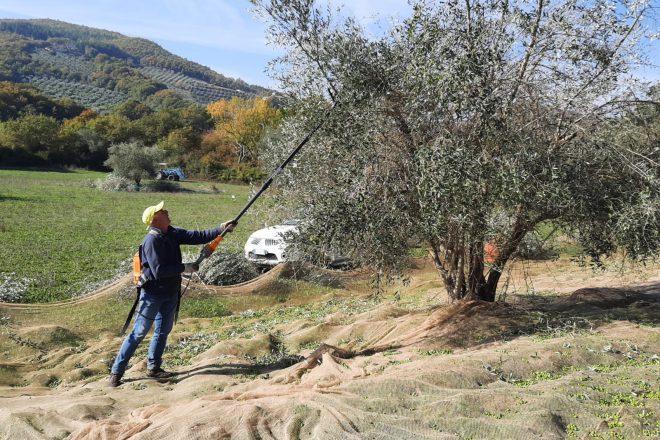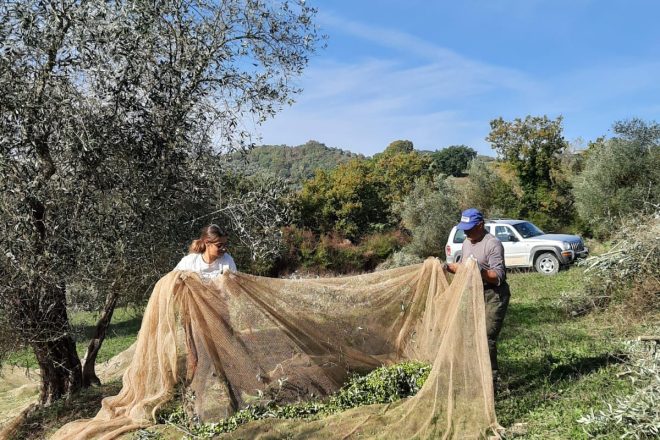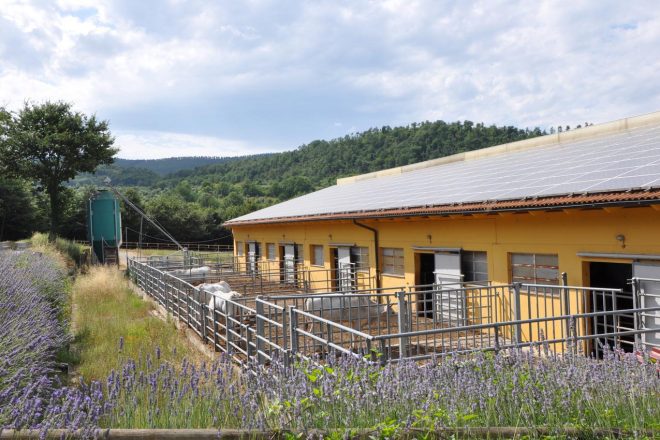Described as ‘Italy’s best-kept secret’, Umbria is a rural Italian idyll, a region of exceptional food and wine production, rolling green hills and traditional villages. Here, days slow down; a life of good food and quality time with friends and family that has hardly changed in 500 years.
It was this authenticity and character that inspired the owners to invest in Torre Bisenzio. A run-down former farming estate infused with Umbrian charm and tradition, over the years, it has regained its place in the region as a working organic farm.
The estate is dedicated to preserving the historic indigenous Chianina. The white cattle that dot the fields are an ancient breed, raised in Tuscany, Umbria and Lazio for over 2000 years. Chianina beef is famed for its quality and nutritional value and is used to make the famous bistecca alla fiorentina premium steaks. Torre Bisenzio has been instrumental in increasing the population of the Chianina cattle in the area, and now boasts a 125-strong herd roaming the farm.
With 650 olive trees, 5 hectares of vines and 265 hectares of land (175 owned and 90 rented), the estate also produces red and white wines, a fragrant, high quality olive oil, and organic vegetables in the gardens of the Villas.
Guests can explore the heart of Italy without leaving the estate, spending hours wandering the woodlands, the olive groves and vineyards or visiting the farm and their wine production. Easy white tracks crisscross through the fields; a gentle walk through Umbria’s rural heritage.

